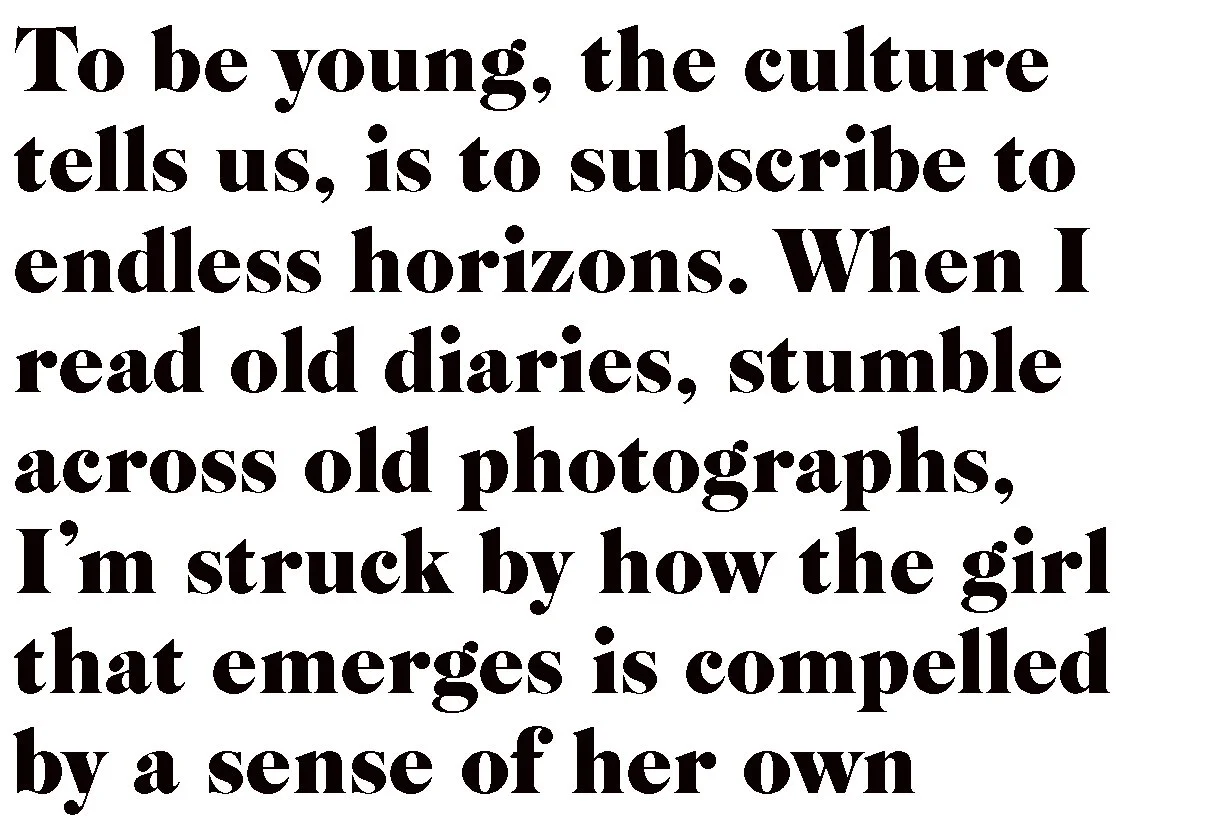Minna Gilligan: Small World
catalogue essay by Neha Kale
1.
To be young, the culture tells us, is to subscribe to endless horizons. When I read old diaries, stumble across old photographs, I’m struck by how the girl that emerges is compelled by a sense of her own infinity. To travel to far-flung places. To sow friendships and relationships and experiences through the seeds of her own daring. To believe that if she made a wrong turn she could reverse and move in the direction of yet another unlived life.
Now, I feel tethered by small rituals. A bowl of pasta, lovingly served, after work. Phone dates with an old friend, our conversation spooling and unspooling around the minutiae of our days, the weight of shared history. Out the window of my study there’s a plane tree that sprouts, then sheds, leaves: spring, summer, autumn. Now, winter again.
2.
Minna Gilligan has been tasked with scanning her grandmother’s family photographs. She thought it would take her a day. Instead, weeks pass sorting thousands of images. She describes, over Zoom, a sense of awe around how profoundly a small collection of objects can testify to the richness and depth of a life.
We talk about how, as the years pass, our energy narrows, settles in the places we dwell, unfurls around our duties to the people we most care about. The artist speaks about the pleasure she takes in making a handmade card, in the patterns of a new dress, in creating a home adorned with her deepest obsessions. I think about the lineage of women artists who crafted tiny universes out of whatever materials they had at their disposal, who mined the intimate and the domestic for magic and beauty, dreaming small worlds of their own.
3.
Gilligan delights, once again, in the immediacy of drawing. She makes new paintings, returns to the boldness and freedom of acrylic and aerosol on canvas, a technique she last used in art school. She shows me a new work, hot pink and acid green and yellow, grids and flowers and swirls. In the centre, an explosion of lines draws my eye, a tornado of expressive energy. For the artist, colours have always possessed an emotional charge. Sickly sweet, too-bright, hyperreal. To me, this is the palette of heightened reality. It’s the language of fantasies and visions and dreams, of life lived at full volume. The artist has been experimenting with an earthy brown. There it is, seeping into her freewheeling compositions, imposing a limit, grounding the viewer in the here and now.
4.
How do you map the passage of time? The artist, I learn, collects old magazines, vintage Dolly and Girlfriend, the same titles I pored over as a teenager. She cuts out the images that compel her and arranges them into patterns, as meticulous and hypnotic as ‘70s wallpaper. They become the basis of fabric prints. Here, a Lipsmacker gloss in cranberry, a flavour I used to carry in the ‘90s. There, a bright-red telephone.
All the abundance of a deconstructed fruit bowl; a sea of cherries and bananas and grapes.
The artist tells me about her urge to to catalogue fleeting moments. But I see, in this instinct, the desire to imbue the everyday, with an extraordinary significance. About honouring the things that have passed. About the power of choosing one thing at the expense of another. To find, in the winnowing of horizons, extraordinary reserves of attention.
And to learn that the world is not over there, at any number of possible destinations like we may have believed when we were younger. But right here, all around us. Exactly where we are.
– Neha Kale, 2023

